Down Buying Guide – 2024 Edition


Presented by DOWNLITE®
Down Buying Guide . is content is sponsored by DOWNLITE. International, America's premier down and feather bedding manufacturer. Founded in the 1970s, DOWNLITE is recognized as a world leader in quality products today. We continue to be cutting-edge in developing new and innovative bedding products.
Be sure to check out all DOWNLITE has to o er.


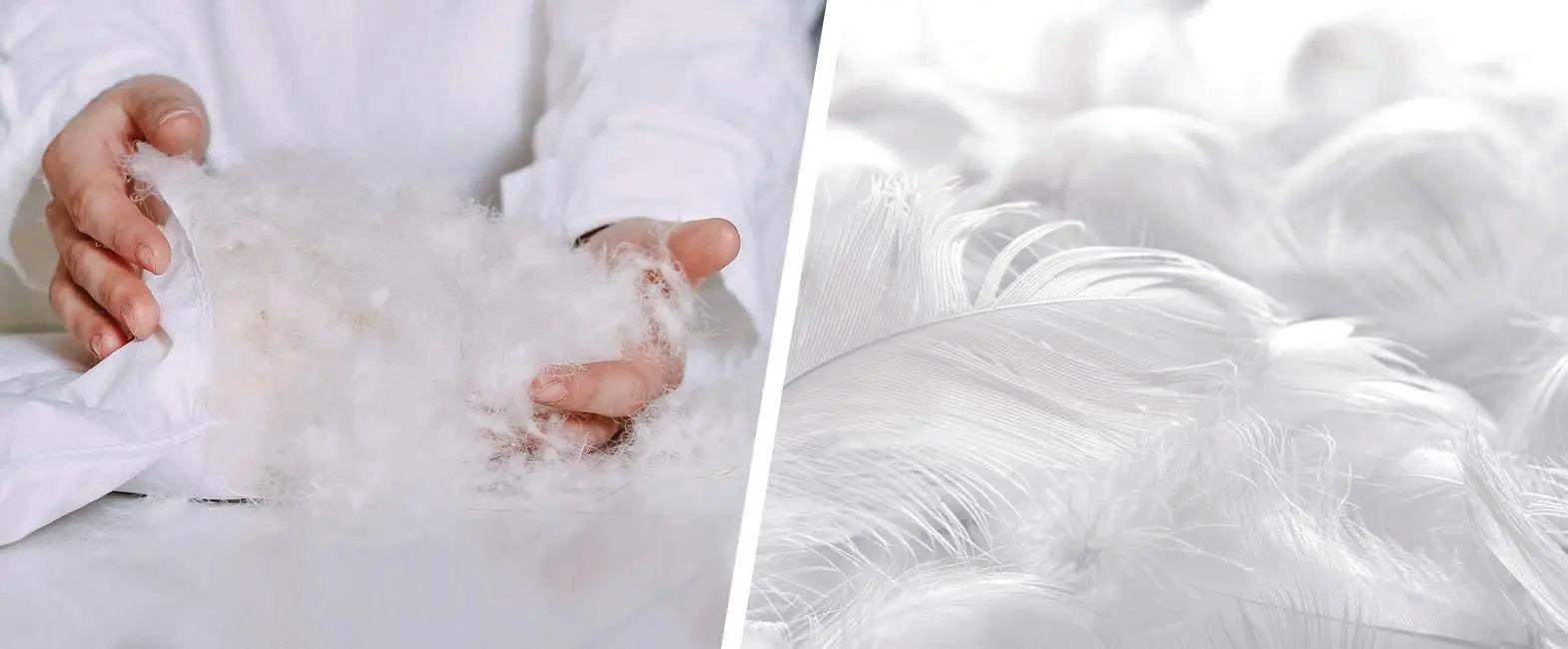
Down 101
Buying natural- lled bedding products involves many overwhelming decisions With all the variables involved, the options seem endless. We have gathered helpful information to guide you.



What is Down?
Down is the light, u y coating beneath the feathers of ducks and geese. Each down cluster is made from thousands of tiny bers, like little cotton balls between the bird's skin and feathers. Ounce per ounce down is the most e cient insulator for bedding products. It is not only lighter weight, but it also has the unique ability to "breathe," allowing excess heat and humidity to escape and allowing you to reach an ideal temperature. Down clusters are naturally very durable; it is not uncommon for people to use a down bedding item for a dozen years or more before replacing it. Down is also naturally ame retardant, making it an excellent choice for safe sleeping.


What are Feathers?
Feathers are the outer coating of protection for ducks and geese. ey are the rigid plumage found on the outside of waterfowl and can range in size from 1cm to 6cm. Products containing feathers will be heavier than down but also o er more support. At DOWNLITE, we only use feathers in pillows and feather beds. A comforter lled with feathers would feel quite heavy and provide di erent insulation than down.



Duck vs. Goose
Although all birds have feathers and down, virtually all down and feathers come from geese and ducks. Generally, the larger the bird and the colder the climate in which they live, the larger the down cluster and the higher the ll power of the down. us, goosedown typically has larger/better clusters. High-quality down can be found in both ducks and geese. But duck down and feathers are less expensive than goose down and feathers for three primary reasons:
1. ey're perceived as slightly inferior in quality to geese.
2. e worldwide supply of duck down far exceeds that of geese.
3. Goose down has less of an odor compared to duck down.


Grey vs. White
Down and feathers can come in shades ranging from pure white to black-speckled grey. e industry has placed a premium on white feathers and down due to their ability to blend better visually when lled into white bedding products. However, the color of the feathers and down has no relevance to its quality. When dark colors of lling appear next to lighter lling, it is called Flecking. It is almost impossible to prevent some ecking because down and feathers are natural by-products collected and processed in shared facilities. Sometimes, it is better to use gray lling in white bedding because any stray white lling won't show as much as an all-white lling.
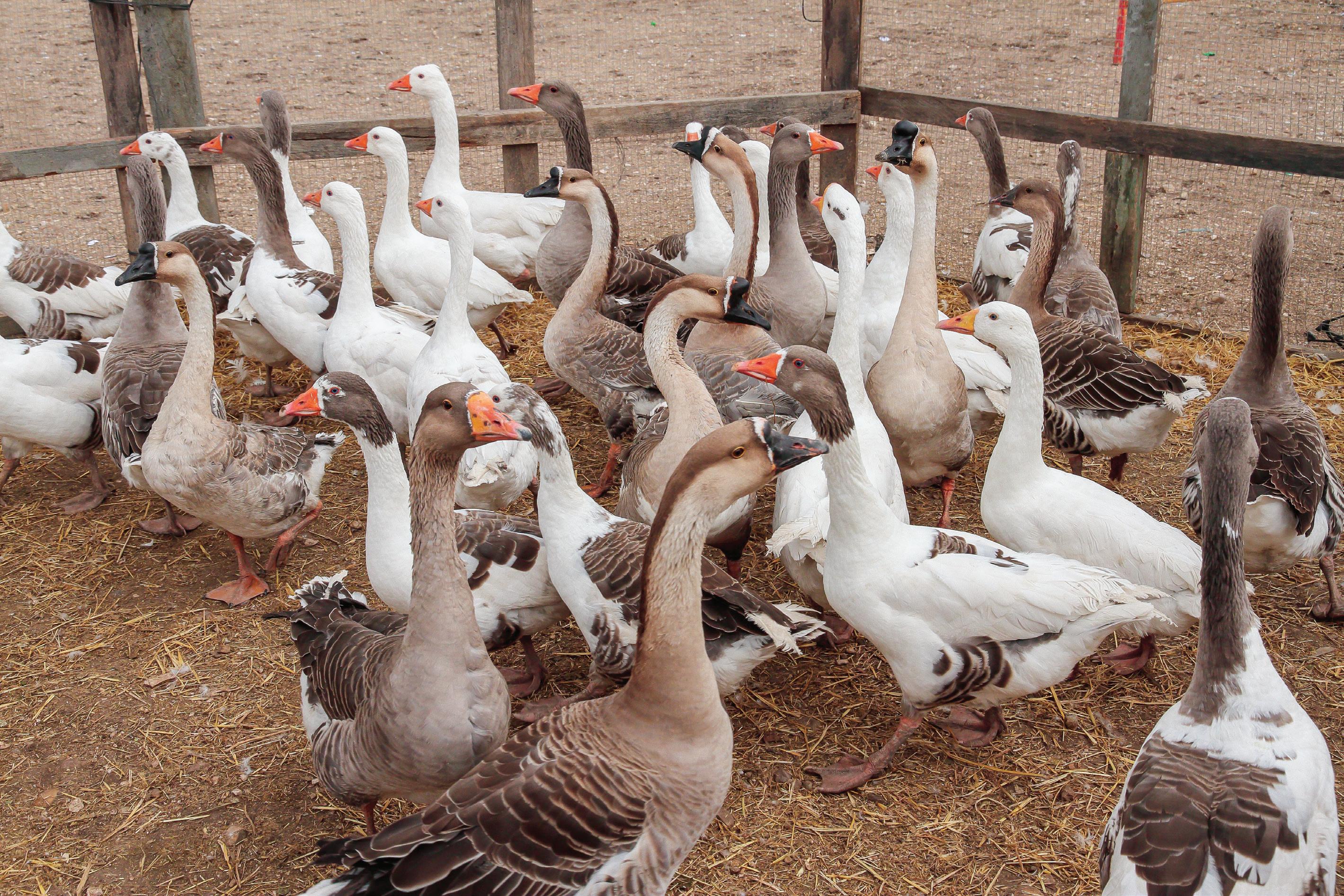
From Raw Material to Bedding Quality




About 75% of the world's feather and down production comes from Asia, with the remaining source mainly being Eastern Europe. Farmers sell the birds for their meat, and the down and feather become a by-product. is is then purchased and shipped to manufacturers for processing. After the feathers and down are procured, they must be washed, sterilized, and sorted for use in bedding and apparel. First, down and feathers are sent through giant washing machines that wash and rinse the raw goods to remove dirt, oil, and bacteria. We wash our RestAssured® down twice with bluesign™ certi ed detergents to ensure cleanliness. e ll is dried and sterilized in a steam dryer at temperatures between 250-275°F. e sanitized material is then sorted in large separating machines, which produce di erent lling qualities based on various feather and down cluster sizes.
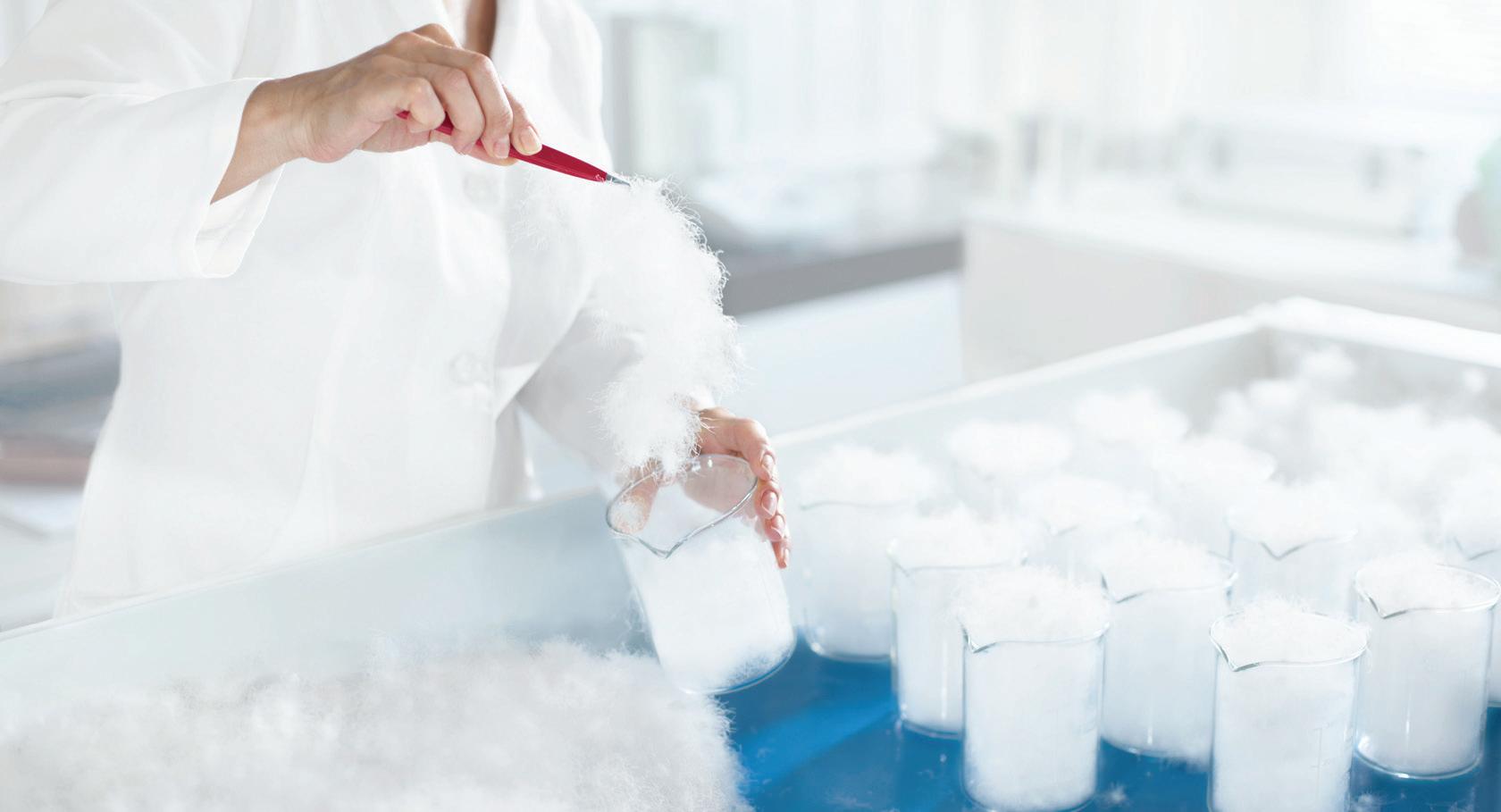



dried before it is used in the nal products. is allows tighter control over products through nal production. ere are several industry-accepted tests for feather and down ll used in bedding and other nished products. e three most prominent tests are


1. Fill Power
Fill power measures how ' u y' or lofty down is. is test involves lling a cylinder tube with 30 grams of down and measuring how many cubic inches of space it takes. A specially calibrated weight is placed on top of the down and allowed to fall slowly for 60 seconds. e test is done three times, and an average of the three tests is taken for a nal result. e higher the ll power, the loftier the down, and the better an insulator. Typical ll power is approximately 550-600 cubic inches and can reach as high as 800 or more in premium bedding. As ll power increases, so does the price of the down. View the video to see this test in action.
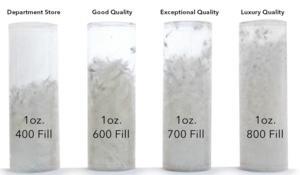
2. Turbidity
Turbidity is a test that involves adding 10 grams of down into 1 liter of water. is container of down and water is sealed and vigorously shaken for 30 minutes. e mixture is then strained into a graduated cylinder. e tester will look down into the opening of this cylinder to see if a pair of crosshairs on the bottom are visible. e cylinder is lled to the top marker. If the tester has trouble viewing the crosshair, the cylinder is slowly emptied until it is visible from the top. e marking where the water is equals the cleanliness of the down. e minimum standard in the United States is 300mm and 500mm is considered "hypo-allergenic ." e higher the turbidity number, the 'cleaner' the down. View the video to see this test in action.
3. Oxygen
e oxygen test further proves the cleanliness of the down, where organic materials are measured. Organic materials are dirt and bacteria from the down. e test adds specially measured chemicals to the water used for the turbidity test. e lower the oxygen count, the less organic materials in the nished product. A good oxygen test measures 4.5 or lower. e standard in the United States is a maximum of 10 (mg/100g), and 4.8 or less is considered "hypo-allergenic."
Independent Outside Testing
ere are many labs for the testing of down products. International Down and Feather Laboratories (IDFL) and California Down & Feather Testing Laboratory (CDFTL) are two standard labs. Both facilities regularly test down from down processors and retailers of the nished goods. Many more extensive retail and catalog chains request o cially certi ed tests from these companies to audit their inventory of down products.

Down Bedding by DOWNLITE
Few things in life make you feel as pampered as luxurious down bedding. Although we include many more popular uses of down and feathers in our bedding, this list is not all-inclusive. e information listed is a guideline to help you decide what bedding is best for you, but everything is a personal preference.




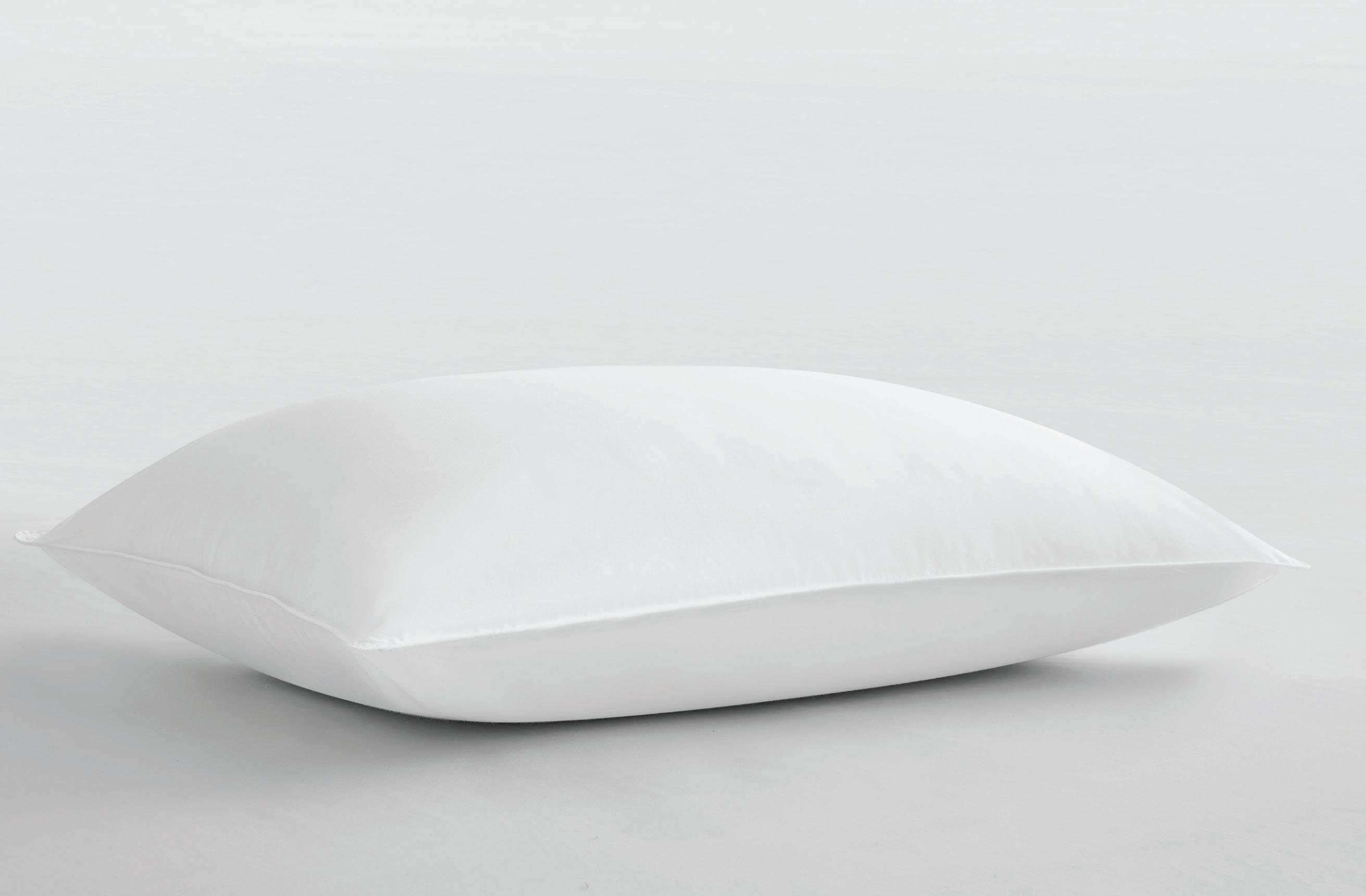
Although pillows may seem simple, many variables are involved in making a pillow. e three basic parameters of a pillow are ll, fabric, and construction.



A natural pillow can be lled with down, feathers, or both. ese blends range from 5% down/95% feathers to 50% down/50% feathers. With blended pillows, the more down, the softer the pillow. If you buy a down pillow, you may notice that the law label shows "75% down" and not "100%". is is because short of hand-picking every cluster; it's nearly impossible to get a pure 100% down cluster. e other 25% of your down pillow consists of additional down clusters, down bers (broken clusters), and small feathers (<6cm).
Our natural ll pillows are made with cotton fabrics. A thread count of 230 or higher means that the pillow is "down-proof." Generally, as the thread count of the pillow fabric increases, the price of the pillow rises as well.
We have two di erent pillow constructions as well: standard bag and chamber. e standard bag is a simple shell lled with down/feather. A chamber pillow features three compartments inside the shell—a core of feathers in the middle, with down on top and bottom.
Our pillows come in various densities, from extra soft to extra rm. We recommend soft pillows for stomach sleepers and rm pillows for side sleepers. A medium pillow suits back sleepers or those who change positions through the night.

Blankets
Down blankets are perfect when a consumer needs less warmth, typically during summer or hotter climates. Most down blankets utilize a sewn-thru box construction. Although less down is used in lling blankets, they are becoming much more popular among consumers as a substitute for a comforter. A down blanket is also an excellent option to add extra warmth in the winter without needing a heavyweight comforter.
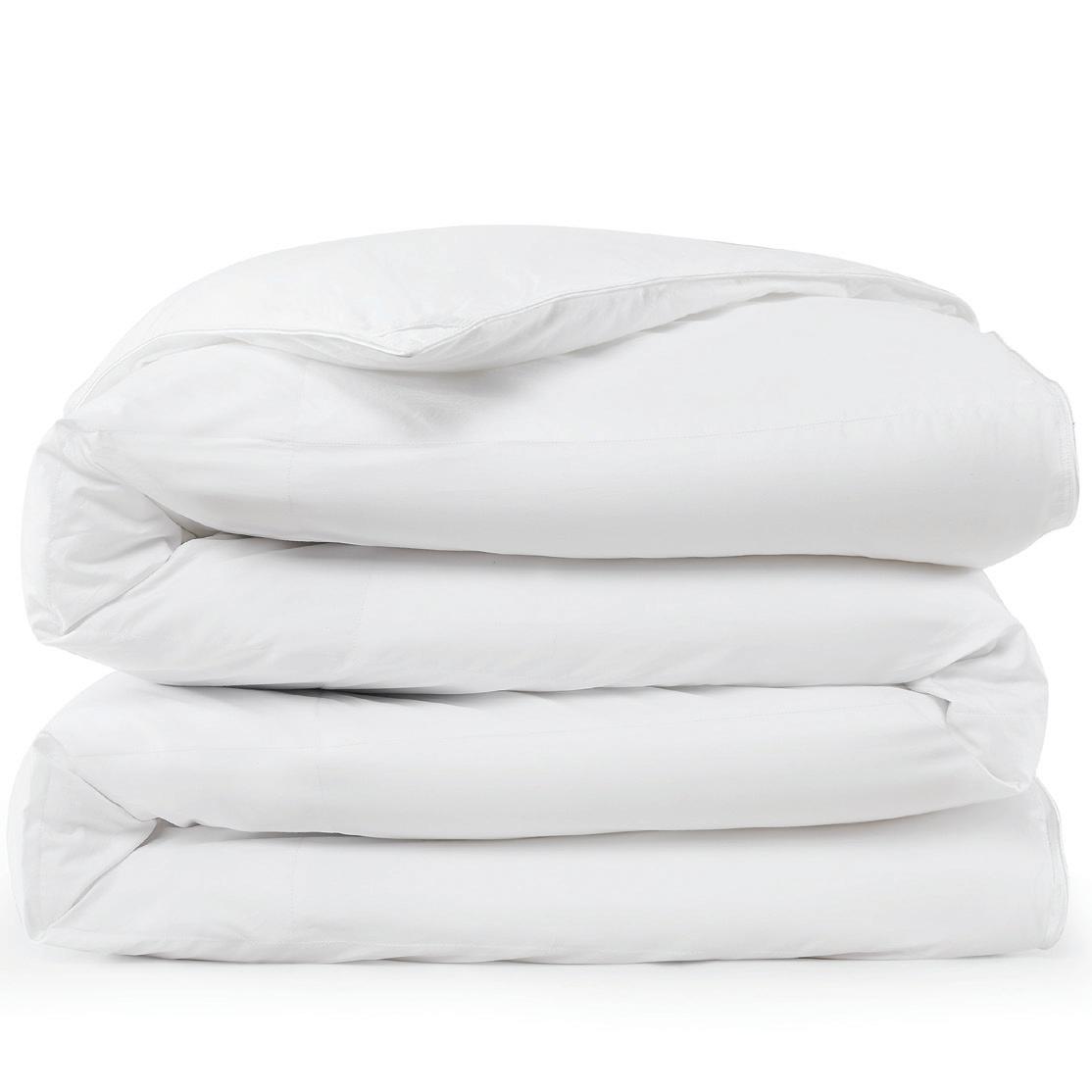
Comforters
Down comforters come in a variety of weights and constructions.
DOWNLITE o ers comforters in three basic weights: lightweight, year-round, and winter. We consider the ll amount plus the down used's ll power to determine these. Fill power measures how lofty and insulating the down is. is means you'll see higher ll power (650+) in our winter comforters. e amount of ll also plays a factor in the comforter's weight. A lightweight comforter will have >30 oz. of ll, a year-round 30-50 oz., and winter has <50 oz. in a queen size.
We also have three di erent constructions for our comforters: sewn-thru, ba e box, and PermaBa e.
• Sewn- ru: Fill is added to the shell, and then the top and bottom layers of fabric are sewn together. is forms boxes that can range from 4”-18” in size, the ultimate in eliminating downshifting in the comforter.
• Ba e Box: e boxes are pre-sewn into the shell, and small openings between boxes allow the ll to be blown into the comforter. is can allow some shifting of ll but gives a loftier comforter.
• PermaBa e®: is is the same as the ba e box above, but the small openings are covered with a ap of fabric inside the shell. is allows the same loftiness but with
Bedding Care



Down comforters and pillows should be shaken out daily to restore their loft. You can
Protecting your comforter and pillow is a great idea. Duvet covers for comforters and pillow protectors are worthwhile investments that signi cantly extend the life of down bedding. ese also allow you to wash the outside covering of your bedding more
Ideally, you will wash your pillow protectors and duvets rather than your feather/down bedding. However, you should wash your products at least twice yearly to sanitize them. We don't recommend using the dry cleaner because the chemicals are too harsh. Instead, use your washer and dryer if you have extra-large capacity and a front-loading washer (or no spindle/agitator on a top loader). You can also take them to the laundromat and use the large-capacity machines if they aren't available in your home.
Before washing, ensure the fabric is not weakened by age or wear, or you might get a washer full of loose feathers. You can wash your down products in warm water on a gentle cycle, using a mild soap like Woolite®.
It takes 3-4 hours to completely dry two pillows or a down comforter in a large commercial dryer on medium heat. Adding a couple of clean tennis balls to the dryer can help break up clumps of lling and maximize the u ness of your pillows and comforters. e most important thing is to ensure that your product is dehydrated before use since mildew can ruin your bedding. e outside of the product might feel dry, but the down and feathers inside could still be slightly damp.
Why Downlite?
Down blankets are perfect when a consumer needs less warmth, typically during summer or hotter climates. Most down blankets utilize a sewn-thru box construction. Although less down is used in lling blankets, they are



Superior Products
It all starts with our down and feather lls, the cleanest in the industry. Our internal standards are far stricter than those set by the FTC and USDA, and we are universally perceived as the highest-quality down and feather processor in the United States.





Customer Base
Our customer list includes major retailers, catalogs, and hotels. In addition to these bedding customers, we sell washed and processed bulk feathers down to many domestic furniture manufacturers and highly respected international apparel makers. DOWNLITE has been entrusted by some of the most powerful licensed brands in the world, including Eddie Bauer®, Tommy Bahama®, Stearns & Foster®, Pendleton®, and PrimaLoft®.

























